In-line translation using Assembler
There are two translation methods: Manual translation “in line” and “.xliff” translation through a translation agency. We are going to focus on the Manual translation “in line” one in this article. Check the “.xliff” translation here. Manual Assembler Translation: in-line, local edits & annotations
Manual Assembler Translation: in-line, local edits & annotations
Find the Assembler ready material for translation
When we access Veeva Vault PromoMats, the first thing to do will be to find the Assembler ready material that we want to translate. (If you don’t have access to PromoMats make a request here) There are several ways of searching in Veeva Vault PromoMats.
- We can type the Assembler-ready material Document number in the top search bar looking for the material that we want to translate.
- If we are going to translate Global Content, we can go to the Portal tab in the top menu and select the Global Portal.


- Inside the Global Portal we will select the corresponding widget.
- In the StoryLine widget we will find the brand campaign organized by chapters in the modular way of StoryCards. Select your brand in the left panel filtering option “Product” to refine your search.

For launching products, the Global promotional team is offering together with StoryCards modules, finished promotional materials, such as Emails or iPad CLM presentations which are Assembler ready. They can be easily found in KAPOST application, through a Campaign Bundle link provided by the Global team. Clicking on the selected material in KAPOST, will directly open the material in Veeva Vault PromoMats system.
*NOTE: finished promotional materials Assembler ready, will only be available for launching products – as MOLNUPIRAVIR, KEYTRUDA ESOPHAGEAL etc. – Learn more how to translate and localize launching materials here
Make a Copy and fill in the metadata
Once we find the content we want to translate, click on the gear icon and select “Make a copy”.
We will fill the name for our new copy and press “continue”.

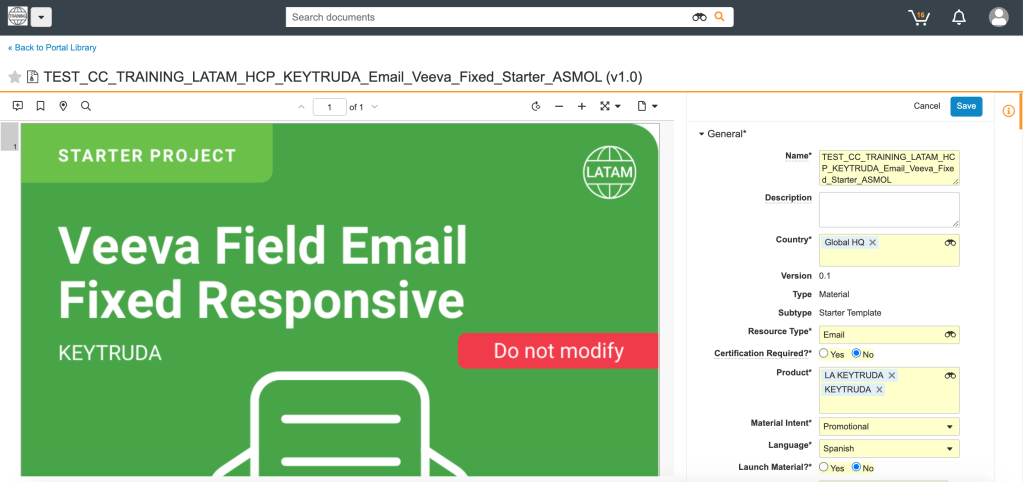
Then we will fill the metadata following our country requirements. Keep in mind we will change the language field to the target language to which we want translate it. Once the metadata is complete, we can save the copy.
NOTE: Keep in mind, if you are building a SFMC Email, and you would like to take advantage of the integration between PromoMats and SFMC, add as “Method of Delivery”: SFMC Email. Take a look to all the Pre-Requisites in this article

Open in Assembler and translate manually “in-line”
We will find our new copy in the PromoMats Library / My Library. You can go back to the main page clicking on the top left arrow next to the Portal icon.
When opening in full mode our copied material, we will see the option “Open in Assembler” in the three dots icon.
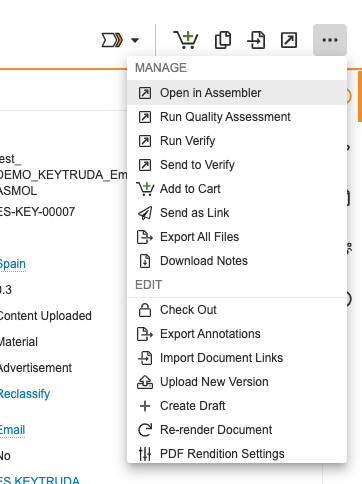
When we click, Assembler will open in a new window tab. (Please allow the Pop Up windows in your browser for Chrome or for Safari)
We will see first a pop-up, asking if we want to choose the translation function “XLIFF”. In this case, as we want to translate it manually “inline”, we will choose “NO”.
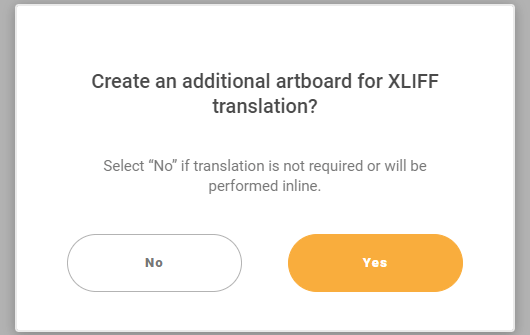
In the Assembler main artboard, we will see the selected material in editable mode, starting on the original language (if the Source is Global, source language will be English HQ).
You just need to copy and paste the text in the several cells, replacing the English by the desired language.
Text styles, sizes and layout are retained.
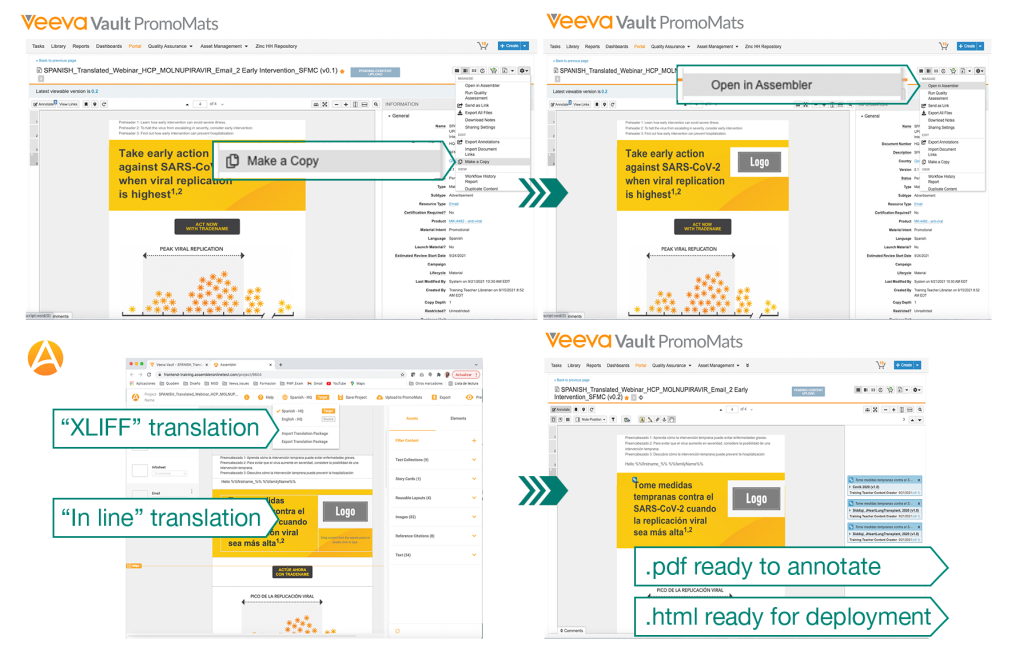
Machine content translation
Our company has a Global agreement with the translation Agency CQ Fluency, to use their machine translation app.
We will have available the option of copying the given English text in that app and getting the translated text in the desired language, so we avoid translating it ourselves from zero. Then, we will need to copy the translated text and paste it into the Assembler cells in the artboard. Take a look at the machine translation app here
Translate Images and add them to your Assembler job
Download the source images in editable format, to get them translated.
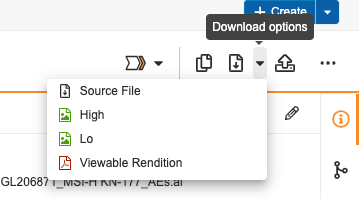
You will see the Asset number of each image in the Assembler Asset Panel. Search it in PromoMats by the Asset Number, and download the source file by clicking on the top right source file icon.
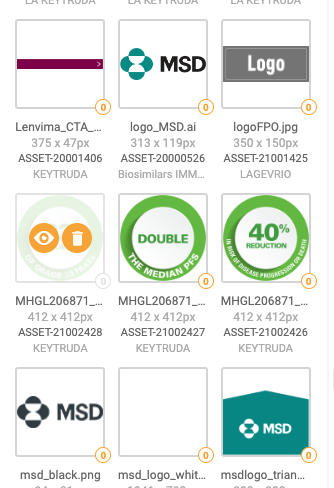
The image translation can be made in design tools such as “Illustrator” or “Photoshop”.
Once the image is translated outside Assembler, you can add the translated image in the “Add an image” button, at the right Asset panel, in the Image section.


Select the image you want to use from your desktop and include the “source” and the “low” rendition images. Then classify them accordingly.
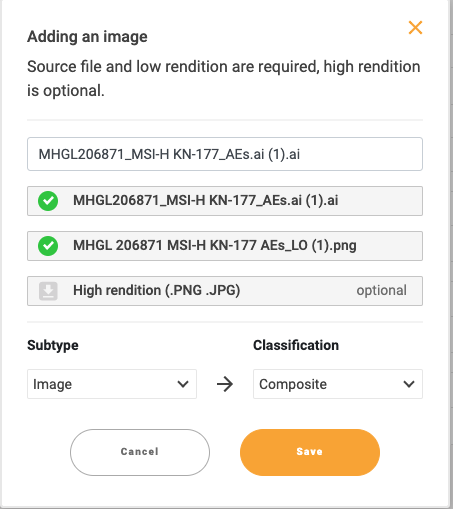
Localize easily dragging and dropping your market specific parts from Assembler Text Collection section.
Once we have translated the content, we must add minor local variations to adapt the material to our market, such as Email footers, Veeva tokens and SFMC personalization strings etc.
Click on the orange arrow next to Text Collection section. Look for your country and click on the orange arrow. To see a full view mouse over the thumbnail and click on the eye icon.
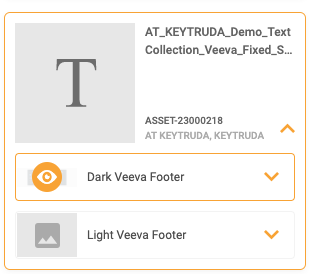
When ready, drag and drop it into your central artboard.
NOTE: Review the right links are included or tell your Digital Publisher to add them.
Follow the same process for the other Text Collection types: Veeva tokens and SFMC personalization strings
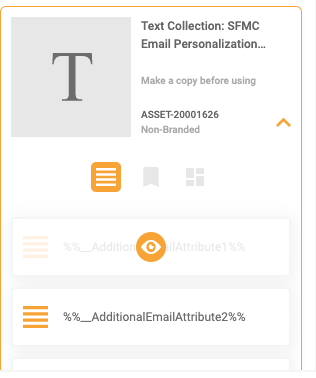
Once the translation is completed, you can check how your material looks like using the “Preview” mode at top


When finished, in the upper menu, click on Upload to PromoMats:
- “Save Project” button is only the last modification in the user’s cache browser.
- Upload as a Draft: Selecting the “Draft” option will save the current Assembler project (.json Component) version in PromoMats with the files and images used. This option is helpful to keep the progress, allowing users to save as many project versions as desired during their workday, to come back to a previous stage if needed.
- Upload as Ready for Review: selecting the “Ready for Review” will create and upload a new material version, creating an HTML package file automatically and establishing the preview PDF as a viable rendition. Choosing this option does not start the approval process but prepares the material to be moved to the next step.
Annotations and references
The local promotional materials can re-use the global references “bringing the Annotations forward” using the two sheets icon or Importing document links function from the three dots icon.

Then you will need to link the anchors to your local claims. Learn more in this article
The Digital Publisher work, deploying in the delivery platforms: SFMC and Veeva CRM Veeva
Vault PromoMats is Integrated with SFMC platform and Veeva CRM.
For Veeva CRM: once your Veeva Approved Email or your iPad Presentation CLM is Approved, you can directly export your HTML package from Assembler or Veeva Vault PromoMats to do the publishing steps and synchronize to Veeva CRM your production files directly from PromoMats. Learn about the complete publishing process here.
For SFMC: once your Email material is Approved, you can use the direct function in Veeva Vault PromoMats “Send to SFMC”. Learn about the complete publishing process here.